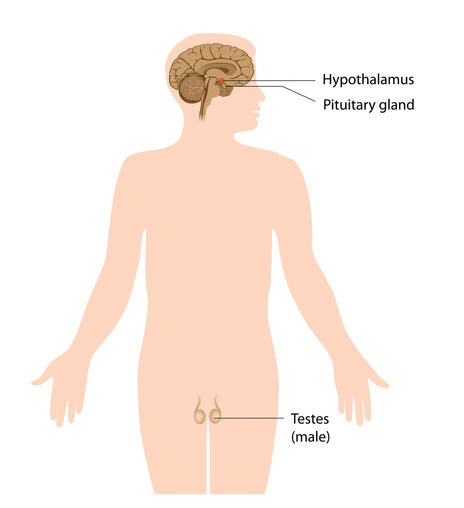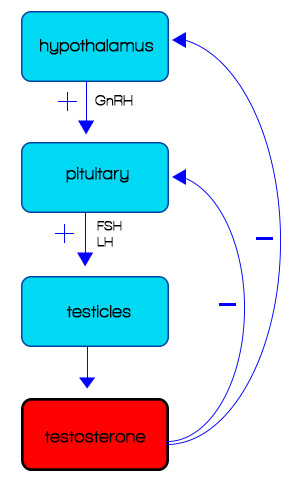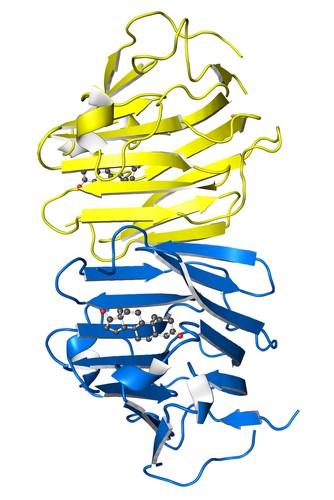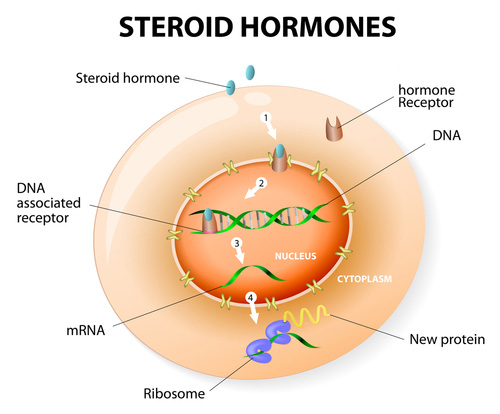Zinc: The Little-Known Mega Mineral You Should Learn to Optimize
From boosting testosterone production & supporting lean muscle growth, to optimizing joint health & immune function, getting enough of this ...

From boosting testosterone production & supporting lean muscle growth, to optimizing joint health & immune function, getting enough of this ...
There are essential fatty acids, and there are essential amino acids, but there are no essential carbohydrates – our body ...
It is true that a person’s caloric intake has a very direct impact on their weight. Consume more than is ...
One of the best strategies you can apply with success to a bodybuilders diet is protein rotation. In essence, eating ...
One of several so called, “super-supplements”, to have hit shelves over recent decades is glutamine, the most abundant amino acid ...
Question: “Is there an optimal amount of Time Under Tension (TUT) to shoot for each set?” When trying to maximize ...
It is important to keep in mind that these 10 key suggestions for Quad training will fly in the face ...
Let’s face it – seeking out the right information can be confusing whether you are a bodybuilder or just an ...
What if I told you that most exercise does not cause long term weight loss? This is a secret the ...
Cholesterol. I think we can all agree that it may very well be one of the most feared nutrients in ...
With an overwhelming amount of research demonstrating its benefits, ‘resistant starch’ blows away many of the sexier sounding supplements that ...
Question: “Is there an optimal amount of Time Under Tension (TUT) to shoot for each set?” When trying to maximize ...
Testosterone – the holy grail of hormones – is unequivocally one of the most important compounds when it comes to muscle building and physical performance.
Everyone knows that testosterone makes you into a lean, mean, muscle building machine, but what is the science behind the magic?
In a two part series, we will discuss:
I should start by saying that this article is not light reading, though I have made efforts to try and prevent the complex subject matter from seeming overly ‘sciency’. I recommend getting yourself a big cup of coffee and paying close attention, every alpha should know a thing or two about testosterone ;).
Production
The production of testosterone in the human body is controlled by a complex system known as the hypothalamic-pituitary-testicular axis (HPTA for short). This system involves several glands that interact with one another to regulate testosterone.
The members of the HPTA are the hypothalamus, the pituitary gland, and the testicles – all of which play their own part in the regulation process.
Hypothalamus
The hypothalamus is an extremely important region of the brain that serves as a bridge between the hormonal system (endocrine system) and the central nervous system. In response to messages from the brain and body, the hypothalamus releases various hormones which regulate processes such as endocrine function, body temperature, and food intake.[1]
food intake.[1]
As part of the HPTA, the hypothalamus responds to various signals by releasing gonadotropin releasing hormone (GnRH) onto the pituitary gland. GnRH then acts on the pituitary to trigger a cascade of events that eventually result in testosterone production.
Pituitary
The pituitary gland is often referred to as the body’s “master gland”. It sits directly below the hypothalamus where it responds to a wide array of signals by releasing various hormones into the blood.
These hormones then regulate the production of other hormones, such as growth hormone, testosterone, cortisol, and thyroid hormone. As part of the HPTA, the pituitary gland responds to GnRH released from the hypothalamus by releasing luteinizing hormone (LH) and follicle stimulating hormone (FSH) into the blood.
Testes
LH and FSH travel through the blood and find their way to the testes, where FSH triggers the production of sperm and LH stimulates the production of testosterone.
Synthesis
In the testes, testosterone is made from cholesterol in a process called steroidogenesis. Steroidogenesis involves several steps, whereby testosterone gets converted into various intermediates such as DHEA and androstenedione and eventually winds up as testosterone. From there, testosterone is released into the blood where it can enter cells and exert its effects.
Pit Stop: Negative Feedback, Conversion, and Hormone Binding
Before we discuss how testosterone goes on to induce changes in the physique, we have to discuss three very important processes that are fundamental to the way testosterone is regulated in the body.
Something you have to understand about your body, is that it likes things the way it likes it. In a process called homeostasis, the body maintains its internal conditions near a certain set point in an attempt to constantly maintain optimal function. Your body has a set point for almost everything – from weight, to temperature, to hormone levels, and even behavior. Your body also has several systems for ensuring your internal conditions do not stray far from their set point.
Negative Feedback
A principal way your body fine tunes your hormone levels is through negative feedback. Negative feedback is the process by which your body responds to changes induced by a hormo ne to regulate that very same hormone (hence the term feedback). In this case, the negative in negative feedback, does not refer to a decrease of some kind – regulation induced by negative feedback can result in increasing or decreasing hormone levels.
ne to regulate that very same hormone (hence the term feedback). In this case, the negative in negative feedback, does not refer to a decrease of some kind – regulation induced by negative feedback can result in increasing or decreasing hormone levels.
Negative feedback relies on effectors and sensors to work. These sensors do exactly what you would think they would do, they sense things, and are usually receptors on cells or regions of the brain. Effectors, are tissues or organs that actually do the work of increasing or decreasing production. Whether your body increases or decreases production depends on the signals it senses.
For example, if there is low testosterone in the blood, the hypothalamus senses the low levels, and triggers events which eventually cause the effector, the testes, to produce more testosterone. Similarly, if the hypothalamus senses too much testosterone in the blood, it will send signals to reduce production or inactivate the excess another way.
Conversion
Beyond negative feedback, your body has other ways of maintaining homeostasis. One critical way, that often leads to the negative side effects associated with elevated testosterone levels, is conversion.
Your body can convert testosterone into a number of other hormones, the most notable being estrogen and DHT. This conversion is happening all the time because these end products are needed for the body to function properly, but the rate at which this conversion occurs changes in response to testosterone levels in the blood.
Part of maintaining homeostasis is maintaining balance between various chemicals. In this case, testosterone, estrogen, and DHT must all be in balance in order for your body to work properly. This explains why excessive testosterone levels lead to increases in DHT and estrogen, because your body is trying to balance these hormones.
This process is abundantly clear in anabolic steroid users. When users inject large amounts of testosterone, the chemical is often converted to DHT and/or estrogen. The increase in conversion end products can lead to side effects such as hair loss and prostate enlargement from DHT, and/or water retention and gynecomastia from estrogen.
Similarly, low levels of testosterone lead to decreases in conversion, again in an attempt to maintain homeostasis by the body.
Binding Proteins
A third and equally important way your body fine tunes the effects of testosterone is through binding proteins.
Testosterone is not water soluble, this means that just like oil, it separates from water, and this poses an interesting problem for the body. Given that testosterone does not dissolve in water, it cannot be transported in the blood. If you tried to mix testosterone in the blood, it would end up aggregating as one big mass the same way oil does in a bottle of salad dressing.
In order to remedy this issue, your body has special proteins that bind to testosterone and make it water soluble and enable it to be transported through the blood. The only problem is that when testosterone is bound by these proteins, it is inactive, and only when this protein is removed can testosterone exert its effects. (If you have ever heard people talk about free testosterone and total testosterone in regards to blood tests, this dichotomy is what they are referring to.) Normally this isn’t an issue because your body knows exactly how much binding protein to produce, relative to how much free testosterone it needs to function properly, but in the case of excessive testosterone production, your body overproduces binding proteins – not only because it needs a way of moving all that testosterone through the blood, but also as a means of preventing excess testosterone from disrupting homeostasis.
The body is a marvelous machine, and these control mechanisms are evidence of that. Unfortunately, these processes often get in the way of our attempts to boost testosterone. Despite this, it is important to note that your set point for homeostasis is not exact. In reality, there is modest range in which your body is happy to keep testosterone levels at. What this means is that we can still strive for, and see benefits from, reaching the upper end of that range.
How Testosterone Induces Growth
Testosterone’s effects in the body are varied and diverse, but there are a few things it does that that are vital to muscle building.
Genetics
Testosterone exerts its effect by acting directly on DNA, whereas  many other chemicals (such as dopamine and norepinephrine), act on the cells surface to induce some immediate change inside the cell. Testosterone, being fat soluble, can easily cross the cell membrane. Once inside the cell, testosterone binds to a receptor, forming a complex.
many other chemicals (such as dopamine and norepinephrine), act on the cells surface to induce some immediate change inside the cell. Testosterone, being fat soluble, can easily cross the cell membrane. Once inside the cell, testosterone binds to a receptor, forming a complex.
This complex then travels to the nucleus of the cell where it binds directly to DNA and alters the messages that are read. These alterations in the reading of message, called transcription, are how testosterone causes changes in the body that lead to increased muscle growth.
In other words, testosterone directly affects gene expression.
Physiology
The exact genetic effects of testosterone are yet to be fully elucidated, but certain physiological changes have been well documented. In general, testosterone increases muscle size, strength, and lipolysis (fat burning).
Muscle Growth
Fat Loss
Strength
Steroid hormones like testosterone are fascinating and complex chemicals. The way that testosterone actually works is more complicated than expected, and the true nature of the compound remains to be fully determined — but one thing is clear, testosterone increases muscle mass, strength, and reduces body fat.
In the next installment of this series, we will use the knowledge we have gained about the mechanisms of testosterone control, as well as function, to devise ways of boosting our levels substantially and reaping the muscle building benefits. If adding lbs to your frame and revealing deep cut abs are on your checklist, then optimizing testosterone levels will give you a HUGE muscle-building and fat loss advantage… in order to help you fulfil your physique goals, the next article is definitely not one to miss!
References
[1] Hypothalamus. (2006, January 21). Retrieved from http://www.neuroanatomy.wisc.edu/coursebook/neuro2(2).pdf
[2] Morley, J. (2013, February 1). Overview of the Endocrine System. Retrieved from http://www.merckmanuals.com/professional/endocrine_and_metabolic_disorders/principles_of_endocrinology/overview_of_the_endocrine_system.html
[3] What is the pituitary gland? (n.d.). Retrieved from http://www.pituitary.org.uk/information/what-is-the-pituitary-gland/
[4] Kadi, F. (2008). Cellular And Molecular Mechanisms Responsible For The Action Of Testosterone On Human Skeletal Muscle. A Basis For Illegal Performance Enhancement.British Journal of Pharmacology, 154(3), 522-528.
[5] Pandini, G. (2005). Androgens Up-regulate the Insulin-like Growth Factor-I Receptor in Prostate Cancer Cells. Cancer Research, 65(5), 1849-1857.
[6] Cangemi, R., Friedmann, A., Holloszy, J., & Fontana, L. (2010). Long-term effects of calorie restriction on serum sex-hormone concentrations in men. Aging Cell, 9(2), 236-242.
[7] Vingren, J., Kraemer, W., Ratamess, N., Anderson, J., Volek, J., & Maresh, C. (2010). Testosterone physiology in resistance exercise and training: The up-stream regulatory elements. Sports Medicine, 40(12), 1037-1053.
[8] Penev, P. D. (2007). Association between sleep and morning testosterone levels in older men.Sleep, 30(4), 427.
[9] Kraemer, W. J., Gordon, S. E., Fleck, S. J., Marchitelli, L. J., Mello, R., Dziados, J. E., … & Fry, A. C. (1991). Endogenous anabolic hormonal and growth factor responses to heavy resistance exercise in males and females. International Journal of Sports Medicine, 12(2), 228-35.
[10] Ahtiainen, J. P., Pakarinen, A., Kraemer, W. J., & Hakkinen, K. (2004). Acute hormonal responses to heavy resistance exercise in strength athletes versus nonathletes. Canadian Journal of Applied Physiology, 29(5), 527-543.
[12] Dietary Intake and Supplementation: Effects on Testosterone. (n.d.). Retrieved from http://www.edb.utexas.edu/ssn/SN PDF/Other-Testosterone.PDF
[13] Dabbs, J., & Mohammed, S. (1992). Male and female salivary testosterone concentrations before and after sexual activity. Physiology & Behavior, 52(1), 195-197.
[14] Jiang, M., Jiang, X., Zou, Q., & Shen, J. (2003). A research on the relationship between ejaculation and serum testosterone level in men. Journal of Zhejiang University, 4(2), 236-240.
[15] Yakubu, M., & Afolayan, A. (2009). Reproductive toxicologic evaluations of Bulbine natalensis Baker stem extract in albino rats. Theriogenology, 72(3), 322-332.
[16] Yakubu, M., & Afolayan, A. (2010). Anabolic and androgenic activities of Bulbine natalensis stem in male Wistar rats. Pharmaceutical Biology, 48(5), 568-576.
[17] Balunas, M., Su, B., Brueggemeier, R., & Kinghorn, A. (2008). Natural Products as Aromatase Inhibitors. Anti-cancer Agents in Medicinal Chemistry, 8(6), 646-682.
[18] Allen, N., Appleby, P., Davey, G., & Key, T. (2002). Lifestyle and nutritional determinants of bioavailable androgens and related hormones in British men. Cancer Causes & Control,13(4), 353-363.
[19] Kiddy, D., Hamilton-Fairley, D., Seppälä, M., Koistinen, R., James, V., Reed, M., & Franks, S. (1989). Diet-Induced Changes In Sex Hormone Binding Globulin And Free Testosterone In Women With Normal Or Polycystic Ovaries: Correlation With Serum Insulin And Insulin-Like Growth Factor-I. Clinical Endocrinology, 31(6), 757-764.
[20] Curtis, F., & Orwell, S. (n.d.). How can I increase testosterone naturally? Retrieved from http://examine.com/faq/how-can-i-increase-testosterone-naturally.html